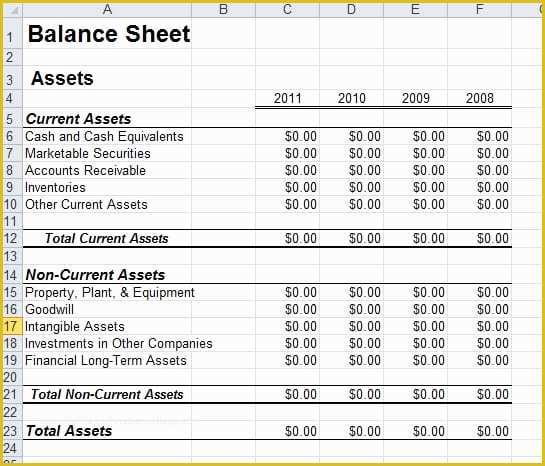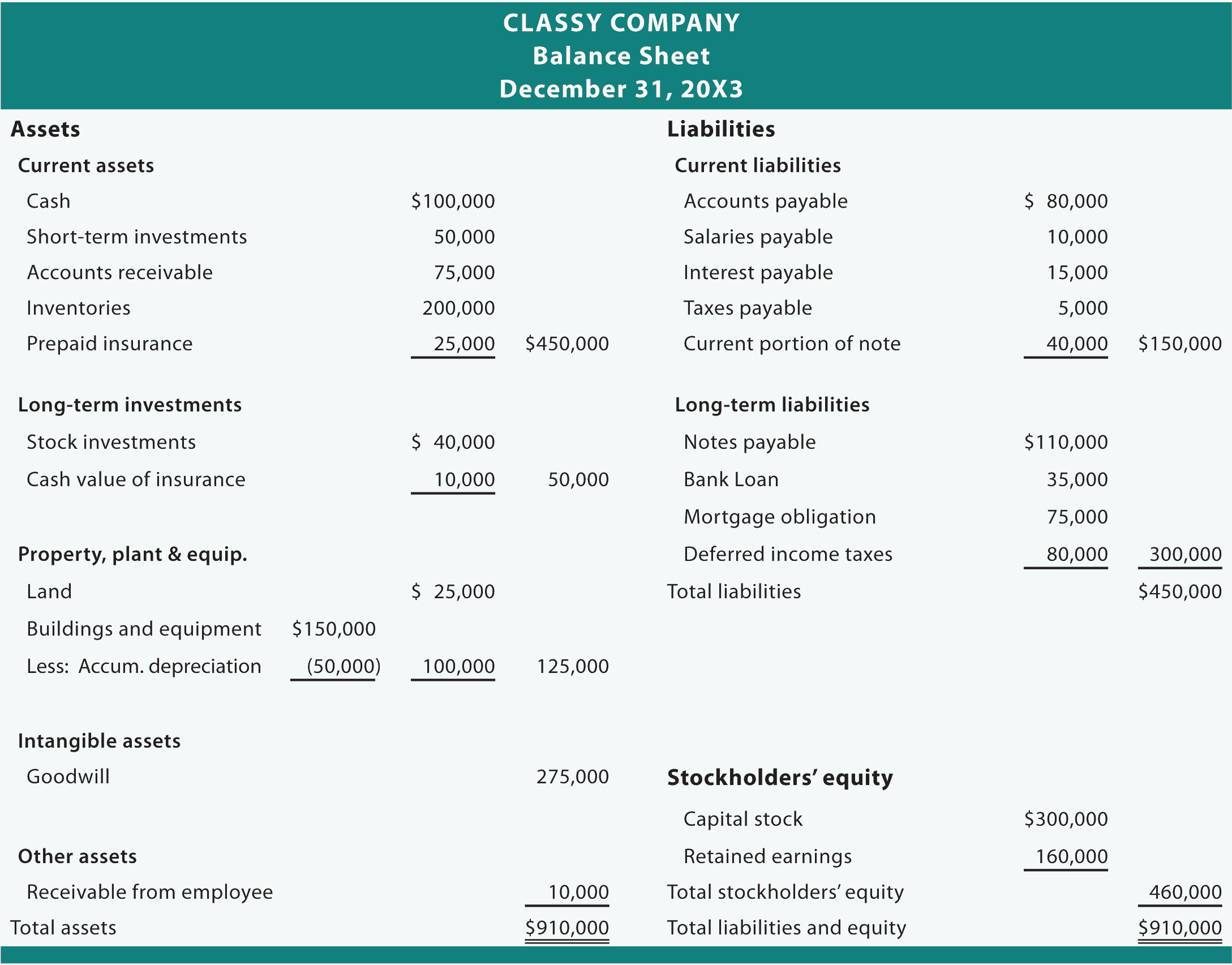
A balance sheet consists of rows and columns that list a company’s assets, liabilities, and equities. One column will list the category of assets or liability, with a second column beside it with the total amount for each of those categories. Underneath the assets and liabilities is data about the owners’ equity, which also includes a column of categories and total amount. Here’s an example to help you understand the information to include on your balance sheet. In the example below, we see that the balance sheet shows assets (such as cash and accounts receivable), liabilities (such as accounts payable, credit cards, and taxes payable), and equity.

Balance Sheet Calculator — Excel Template
The balance sheet is meant to give you a clear view of what your business owes and owns. The insights you can gain from the balance sheet—along with other financial statements—allow you to make informed financial decisions as your business grows. Current liabilities refer to debts or financial obligations that must be settled within a year.
Owner’s Equity/Earnings
- Balance sheets of small privately-held businesses might be prepared by the owner of the company or its bookkeeper.
- Appvizer provides you with a glossary to clarify these concepts and help you manage your business with peace of mind.
- The balance sheet (also known as the statement of financial position) is a financial statement that shows the assets, liabilities, and owner’s equity of a business at a particular date.
- A balance sheet serves as reference documents for investors and other stakeholders to get an idea of the financial health of an organization.
- Fixed assets or long-term assets are things a business owns that it plans to use for a long period of time.
- It shows the balance of resources available once fixed assets have been financed.
It helps answer several questions about a business like – its ability to meet short and long terms debts, net worth and assets and liabilities. As shown in the above balance sheet illustration, assets are broadly classified into fixed assets, investments and current assets. Similarly, liabilities are classified as owner’s capital, long-term debts and current liabilities. A balance sheet is one of the most essential tools in your arsenal of financial reports. Generally speaking, balance sheets are instrumental in determining the overall financial position of the business.
Shareholders’ Equity
A company should make estimates and reflect their best guess as a part of the balance sheet if they do not know which receivables a company is likely actually to receive. These operating cycles can include receivables, payables, and inventory. It also yields information on how well a company can meet its obligations and how these obligations are leveraged.
Who prepares balance sheets?
This is why the balance sheet is sometimes considered less reliable or less telling of a company’s current financial performance than a profit and loss statement. Annual income statements look at performance over the course of 12 months, where as, the statement of financial position only focuses on the financial position of one day. Balance sheets are one of the primary financial financial kpis statements used to measure a company’s financial position. It summarizes the company’s assets, liabilities, and owners’ equity at a specific date, and it is used to calculate the net worth of the business. When paired with cash flow statements and income statements, balance sheets can help provide a complete picture of your organization’s finances for a specific period.
Invest in Zero-Debt Companies with smallcase
It is one of the three core financial statements (income statement and cash flow statement being the other two) used for evaluating the performance of a business. A balance sheet is a financial statement summarising a company’s assets, liabilities, and equity at a specific moment. It provides a snapshot of the company’s financial position, showcasing what it owns, owes, and the value of shareholders’ equity. A company’s financial statements—balance sheet, income, and cash flow statements—are a key source of data for analyzing the investment value of its stock. Stock investors, both the do-it-yourselfers and those who follow the guidance of an investment professional, don’t need to be analytical experts to perform a financial statement analysis.
While stakeholders and investors may use a balance sheet to predict future performance, past performance does not guarantee future results. For example, equity capital is often the last item to be recovered, when a business ceases, for example. TallyPrime is a complete business management software to manage your business easily, faster, and efficiently. Balance sheet preparation involves multiple steps to consolidate the accounting records and preparing various statements. Once you’ve decided that your balance sheet is accurate, you may utilise it to make future financial decisions with ease and confidence.
Use this balance sheet for your existing businesses, or enter projected data for your business plan. Annual columns provide year-by-year comparisons of current and fixed assets, as well as current short-term and long-term liabilities. By reviewing this information, you can easily determine your company’s equity. This balance sheet template includes tallies of your net assets — or net worth — and your working capital. Download the sample template for additional guidance, or fill out the blank version to provide a financial statement to investors or executives. By comparing your business’s current assets to its current liabilities, you’ll get a clearer picture of the liquidity of your company.
A balance sheet template is a tool for tallying your assets and liabilities so that you can calculate your equity. Use a balance sheet template to ensure you have sufficient funds to meet and exceed your financial obligations. Track your quarterly financial position by entering each month’s assets and liabilities and reviewing the monthly and quarterly perspectives of your owner’s equity. Monthly columns provide you with assets, liabilities, and equity tallies, and also reflect three-month figures for each quarter.